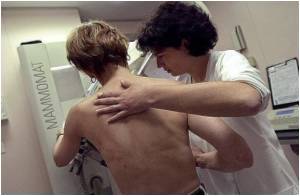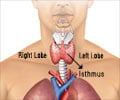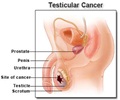
To explore this issue, David J. Brenner, Ph.D., D.Sc., at Columbia University in New York, and colleagues reanalyzed the Japanese atomic bomb survivor data assuming two different pathways through which radiation exposure can ultimately lead to cancer. The first is initiation of gene mutations that convert normal stem cells to premalignant cells that could eventually lead to cancer. The second is radiation induced promotion, or expansion, of the number of existing premalignant cells in the body. The initiation effect is more likely to play a role in children than in adults, they reason, because cells initiated at an early age have a longer time available to expand in number and progress on the pathway to cancer. The promotion effect, on the other hand, is more likely to be important for radiation exposures in middle age, because the adult body already contains larger numbers of premalignant cells.
The researchers developed a model based on these biological effects and applied the model to the Japanese atomic bomb survivor data. They found that the model was able to reproduce the cancer risk patterns associated with age at radiation exposure observed in these survivors. They then applied the same model to predict cancer risks as a function of age in the U.S. population and found that the cancer risks predicted by the model were consistent with the data in the age range from about 30 to 60.
The authors conclude that cancer risk after exposure in middle age may increase for some tumor types contrary to conventional wisdom. They add that these findings could have practical implications regarding x-ray diagnostic tests, which are predominantly performed on middle aged adults, as well as for occupations that involve radiation exposures, again where most exposures are in middle age.
"Overall, the weight of the epidemiological evidence suggests that for adult exposures, radiation risks do not generally decrease with increasing age at exposure," they write, "and the mechanistic underpinning described here provides this conclusion with some biological plausibility."
In an accompanying editorial, John D. Boice, Sc.D., of the International Epidemiology Institute, Rockville, Md., and Vanderbilt University, Nashville, notes that there are uncertainties in generalizing the Japanese data to a U.S. population. He also notes that other data and other models contradict the results of this study. However, he concludes that this biology-based model "raises provocative hypotheses and conclusions that, although preliminary, draw attention to the continued importance of low-dose radiation exposures in our society."
Advertisement
Source-Eurekalert















